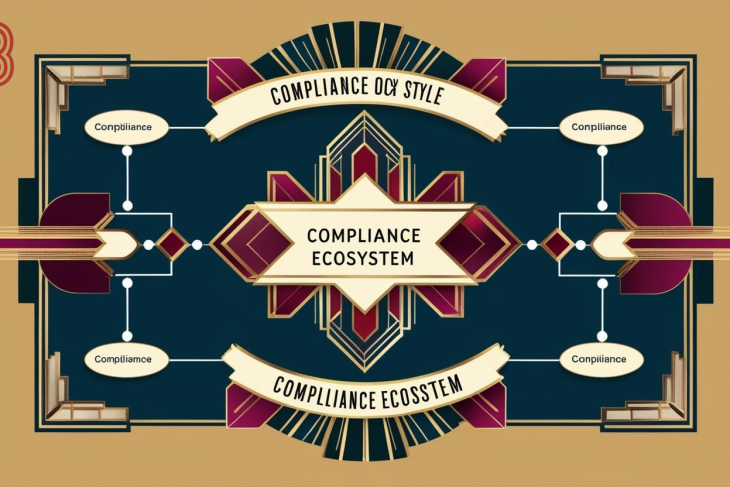Baretzky and Partners Latest News
Risk Mitigation and Compliance

by Admin
Cyber forensics, also known as digital forensics, plays a critical role in cyber risk management by providing the tools and methodologies to investigate, analyze, and respond to cyber incidents.
It involves the collection, preservation, analysis, and presentation of digital evidence, which is essential for understanding the scope and impact of cyber threats. In the context of risk management, cyber forensics helps organizations identify vulnerabilities and improve their security posture. When a breach occurs, forensic […]
NewsRroom
by Admin
Risk Register in Proactive Risk Management
In the dynamic landscape of project management, risk is an inevitable element that can either hinder or enhance the likelihood of a project’s success. One of the fundamental tools used in proactive risk management is the Risk Register. A Risk Register is a central document […]
NewsRroom
by Admin
The Importance of Risk Mitigation Strategies and Risk Response Techniques
In today’s dynamic and uncertain business environment, organizations face a range of risks that can affect their ability to achieve objectives, deliver value to stakeholders, and maintain operations. These risks can stem from various sources such as financial instability, cybersecurity threats, natural disasters, regulatory changes, […]
NewsRroom



AI is increasingly becoming a crucial component in the cybersecurity landscape, addressing the escalating complexity and volume of cyber threats.
by Admin
Leveraging machine learning and advanced data analytics, AI can enhance both defensive and offensive cybersecurity measures, providing real-time threat detection, response, and mitigation. Enhancing Threat Detection One of the significant applications of AI in cybersecurity is in threat detection. Traditional security systems rely on predefined […]
NewsRroom
by Admin
Cyber risk measurement is a critical aspect of cybersecurity management, aimed at quantifying the potential threats to an organization’s information assets.
It involves identifying, assessing, and prioritizing risks based on their likelihood and impact. This process allows organizations to allocate resources effectively, mitigate vulnerabilities, and enhance their overall security posture. One foundational approach to cyber risk measurement is the use of frameworks and standards such as […]
NewsRroom
by Admin
India has recently passed the Financial Action Task Force’s (FATF) Anti-Money Laundering (AML) evaluation.
India has recently passed the Financial Action Task Force’s (FATF) Anti-Money Laundering (AML) evaluation, marking a significant milestone in the country’s financial regulatory framework. The FATF, an intergovernmental organization established to combat money laundering and terrorist financing, conducts rigorous evaluations of member countries to ensure […]
NewsRroom
by Admin
In Spain, Anti-Money Laundering (AML) penalties have seen a significant increase, doubling in recent years following a wave of targeted inspections.
This surge in enforcement is a direct result of enhanced regulatory scrutiny aimed at combating financial crimes more effectively. The Spanish government, responding to both domestic and international pressure, has intensified its efforts to identify and penalize entities that fail to comply with AML regulations. […]
NewsRroom
by Admin
Detecting and preventing Man-in-the-Middle (MitM) attacks requires a combination of vigilance, robust security practices, and the use of advanced technologies.
Detection:Anomalies in Network Traffic: Unusual patterns or unexpected changes in network traffic can indicate MitM attacks. This includes spikes in traffic or unexpected data flows. Certificate Mismatches: Frequent warnings about certificate mismatches or expired certificates can be a sign of MitM attacks, especially if you […]
NewsRroom
by Admin
In risk assessment, qualitative and quantitative analyses are two fundamental approaches, each with distinct methodologies and applications.
Qualitative analysis involves the evaluation of risks based on subjective judgment rather than numerical data. This approach uses descriptive terms to categorize and prioritize risks, such as “high,” “medium,” or “low.” The primary tools in qualitative analysis include risk matrices, expert judgment, and scenario analysis. […]
NewsRroom
by Admin
Artificial Intelligence (AI) is revolutionizing industries by enhancing efficiency, decision-making, and innovation.
However, it also introduces significant legal risks and compliance challenges. Key issues include data privacy, algorithmic bias, and accountability. Data privacy is a major concern as AI systems often rely on vast amounts of personal data. Compliance with regulations like the General Data Protection Regulation […]
NewsRroom
by Admin
Information security compliance plays a critical role in reducing fraud in the realm of cyber risk.
By adhering to established standards, regulations, and best practices, organizations can create a robust defense against fraudulent activities and cyber threats. These measures include implementing comprehensive security policies, regular audits, and continuous monitoring of systems. Compliance with frameworks such as GDPR, HIPAA, and PCI DSS […]
NewsRroom
by Admin
Social media has revolutionized communication, but it has also given rise to new forms of cybercrime, including online defamation attacks.
Defamation involves making false statements that harm someone’s reputation. On social media, such attacks can spread rapidly and have devastating effects. The anonymity and broad reach of social media platforms make them fertile ground for defamatory content. Cybercriminals can easily create fake profiles to disseminate […]
NewsRroom
by Admin
Risk appetite and risk tolerance are crucial concepts in risk management, often used interchangeably but with distinct meanings.
Understanding and balancing them is vital for effective decision-making in both personal finance and organizational strategy. Risk Appetite refers to the level of risk an entity is willing to accept in pursuit of its objectives. It embodies the strategic goals and vision, providing a framework […]
NewsRroom






















